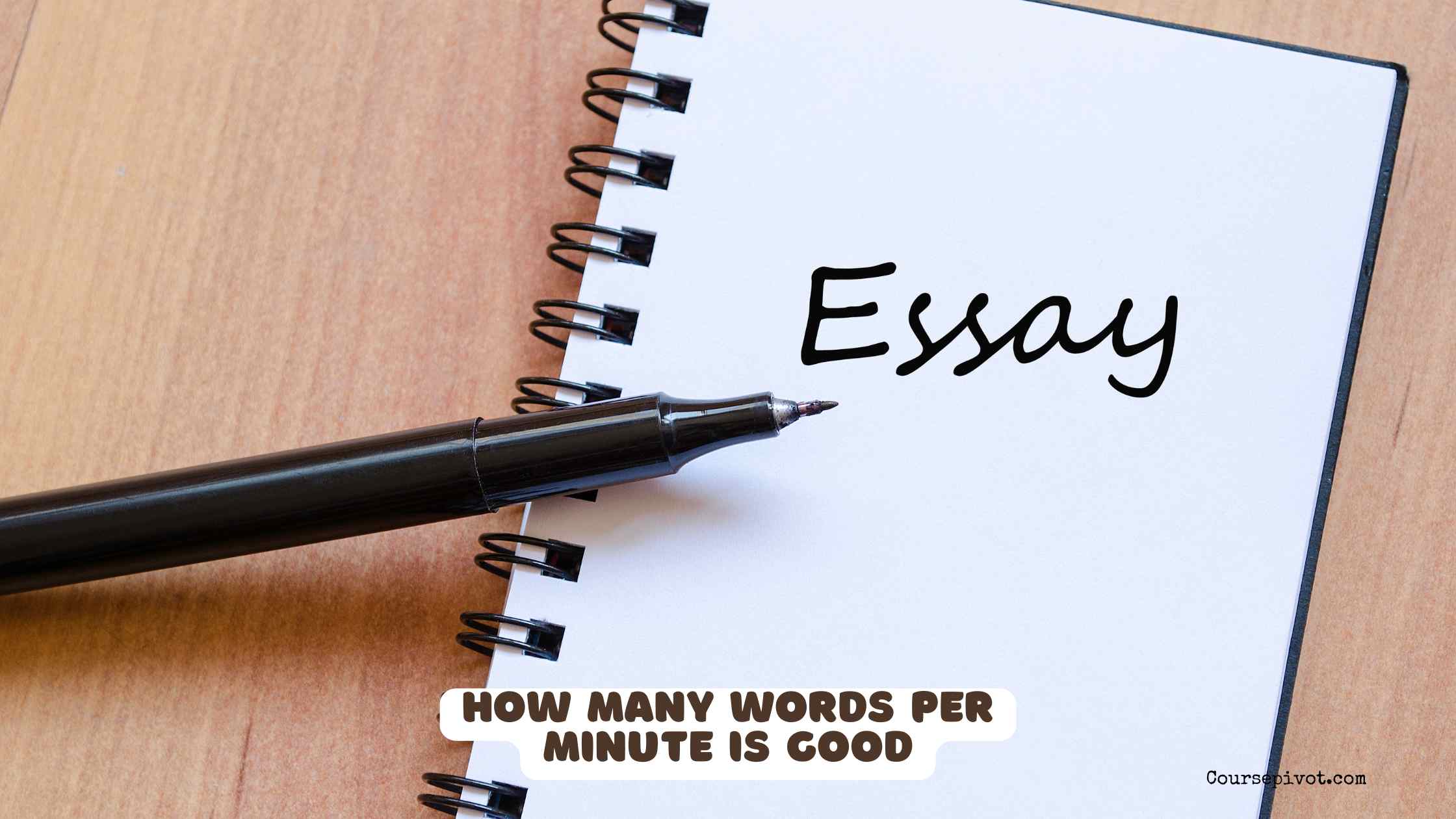
How Many Words Per Minute Is Good
Whether you’re typing a report, giving a speech, or reading a book, knowing how many words per minute is good helps you gauge efficiency and set realistic goals. The “good” rate varies by task—typing, reading, or speaking—and depends on context, skill level, and purpose. This blog breaks down what’s considered a good words-per-minute (WPM) rate for each activity, explains why it matters, and offers practical tips to improve your speed while maintaining quality.
Table of Contents
The Answer: It Depends on the Task
There’s no one-size-fits-all WPM rate, as “good” depends on whether you’re typing, reading, or speaking. Here’s a quick overview of typical benchmarks:
- Typing: 40–60 WPM is good for most people; 60–100+ WPM is excellent for professionals.
- Reading: 200–250 WPM is good for average adults; 400–600+ WPM is advanced for speed readers.
- Speaking: 120–150 WPM is good for clear communication; 150–180 WPM is fast for presentations or auctions.
These ranges reflect skill levels from beginner to expert, so let’s dive into each task to understand what’s achievable and desirable.
Typing: Words Per Minute Benchmarks
Typing speed is measured by how many words you can type accurately in a minute, typically tested on platforms like Typing.com or Keybr.
- Average: 40–60 WPM. Most adults type at this rate for emails, essays, or casual work. It’s sufficient for students or office workers.
- Good: 60–80 WPM. This is ideal for administrative roles or jobs requiring frequent typing, like data entry.
- Excellent: 80–100+ WPM. Professional typists, writers, or programmers often hit this range, with court reporters or transcriptionists reaching 120–200 WPM.
- Beginner: 20–30 WPM. New typists or those using hunt-and-peck methods start here.
For example, a 60 WPM typist can churn out a 300-word email in about 5 minutes, while a 100 WPM typist finishes it in 3. Accuracy matters—typing fast but making errors slows you down with corrections.
Why It Matters
A good typing speed boosts productivity, especially for writers, students, or office professionals. For instance, a 2000-word essay takes about 33 minutes at 60 WPM but only 20 minutes at 100 WPM. Faster typing also helps in time-sensitive roles like journalism.
Reading: Words Per Minute Benchmarks
Reading speed measures how many words you can comprehend per minute, influenced by education, practice, and material complexity.
- Average: 200–250 WPM. Most adults read at this rate for novels or articles, with good comprehension (70–80%).
- Good: 300–400 WPM. College students or professionals often reach this, especially for familiar topics.
- Advanced: 400–600+ WPM. Speed readers or academics hit this range, often using techniques like skimming or chunking.
- Beginner: 100–150 WPM. Younger readers or those tackling dense texts (e.g., legal documents) fall here.
For example, a 1000-word article takes about 4–5 minutes to read at 200–250 WPM but just 2–3 minutes at 400 WPM. Comprehension drops if you push too fast, so balance speed with understanding.
Why It Matters
A good reading speed saves time for students, researchers, or anyone digesting large volumes of text. For instance, reading a 10000-word report takes 40–50 minutes at 200–250 WPM but only 20–25 minutes at 400 WPM, freeing up time for analysis.
Speaking: Words Per Minute Benchmarks
Speaking speed is how many words you deliver per minute, critical for presentations, podcasts, or conversations.
- Average: 120–150 WPM. This is clear and comfortable for everyday speech, lectures, or casual talks.
- Good: 150–180 WPM. Presenters, podcasters, or auctioneers often aim here for energy without rushing.
- Fast: 180–200+ WPM. Used in high-energy settings like debates or radio ads, but risks losing clarity.
- Slow: 80–100 WPM. Common for deliberate speech, like teaching complex topics or addressing non-native speakers.
For example, a 5-minute speech at 150 WPM delivers about 750 words, ideal for a concise TED-style talk. Too fast, and listeners struggle; too slow, and they lose interest.
Why It Matters
A good speaking speed ensures your message is clear and engaging. For instance, a 2000-word speech at 150 WPM takes about 13 minutes, perfect for holding an audience’s attention.
Factors Affecting “Good” WPM
What’s “good” depends on:
- Skill Level: Beginners aim lower; experts push higher.
- Context: Casual typing (e.g., texting) needs less speed than professional transcription.
- Material: Dense texts slow reading; simple ones speed it up.
- Audience: Speaking to children or non-native speakers requires slower WPM.
- Accuracy: Speed without precision (e.g., typos or misreading) reduces effectiveness.
For example, a student typing 40 WPM is fine for essays, but a programmer needs 80+ WPM for coding efficiency. A reader hitting 300 WPM on novels might drop to 150 WPM for technical journals.
Practical Tips for Improving WPM
Here’s how to boost your words per minute for each task:
- Typing:
- Practice daily on sites like TypingTest.com or 10FastFingers (aim for 5–10 minutes).
- Learn touch typing (use all fingers, home row keys).
- Focus on accuracy first—speed follows.
- Reading:
- Try speed reading apps like Spreeder or Readsy.
- Practice chunking (reading groups of words) to reduce eye movement.
- Preview texts (scan headings) to boost comprehension at higher speeds.
- Speaking:
- Record yourself and adjust pacing (apps like Audacity help).
- Practice with a metronome to maintain 120–150 WPM.
- Rehearse speeches to balance speed and clarity.
These habits can push your WPM from average to good or excellent over weeks.
Things to Avoid
Don’t prioritize speed over accuracy—typos or misreading waste time. Avoid skipping practice; consistent effort is key. Don’t push speaking too fast (above 180 WPM) without ensuring clarity, as listeners will tune out. Lastly, steer clear of one-size-fits-all benchmarks—what’s good varies by task and context.
Tailoring to Your Needs
Students should aim for 40–60 WPM typing for essays and 200–300 WPM reading for textbooks. Professionals (e.g., writers or coders) should target 60–100 WPM typing. Presenters or podcasters can practice 150 WPM for engaging delivery. Adjust based on your goals—school, work, or public speaking—for the best results.
Key Takeaways
The answer to how many words per minute is good varies: 40–60 WPM for typing, 200–250 WPM for reading, and 120–150 WPM for speaking are solid benchmarks for most people, with higher rates (80–100+ typing, 400+ reading, 150–180 speaking) marking excellence. Context, skill, and accuracy shape what’s “good.” By practicing regularly, using tools, and tailoring to your needs, you can hit or exceed these targets. Whether typing a report or giving a speech, these WPM goals keep you efficient and effective. What’s your next WPM challenge?
Cite this article
You can copy and paste your preferred citation format below.
Martin, L. & Arquette, E.. (2025, September 30). How Many Words Per Minute Is Good. Coursepivot.com. https://coursepivot.com/blog/how-many-words-per-minute-is-good/



